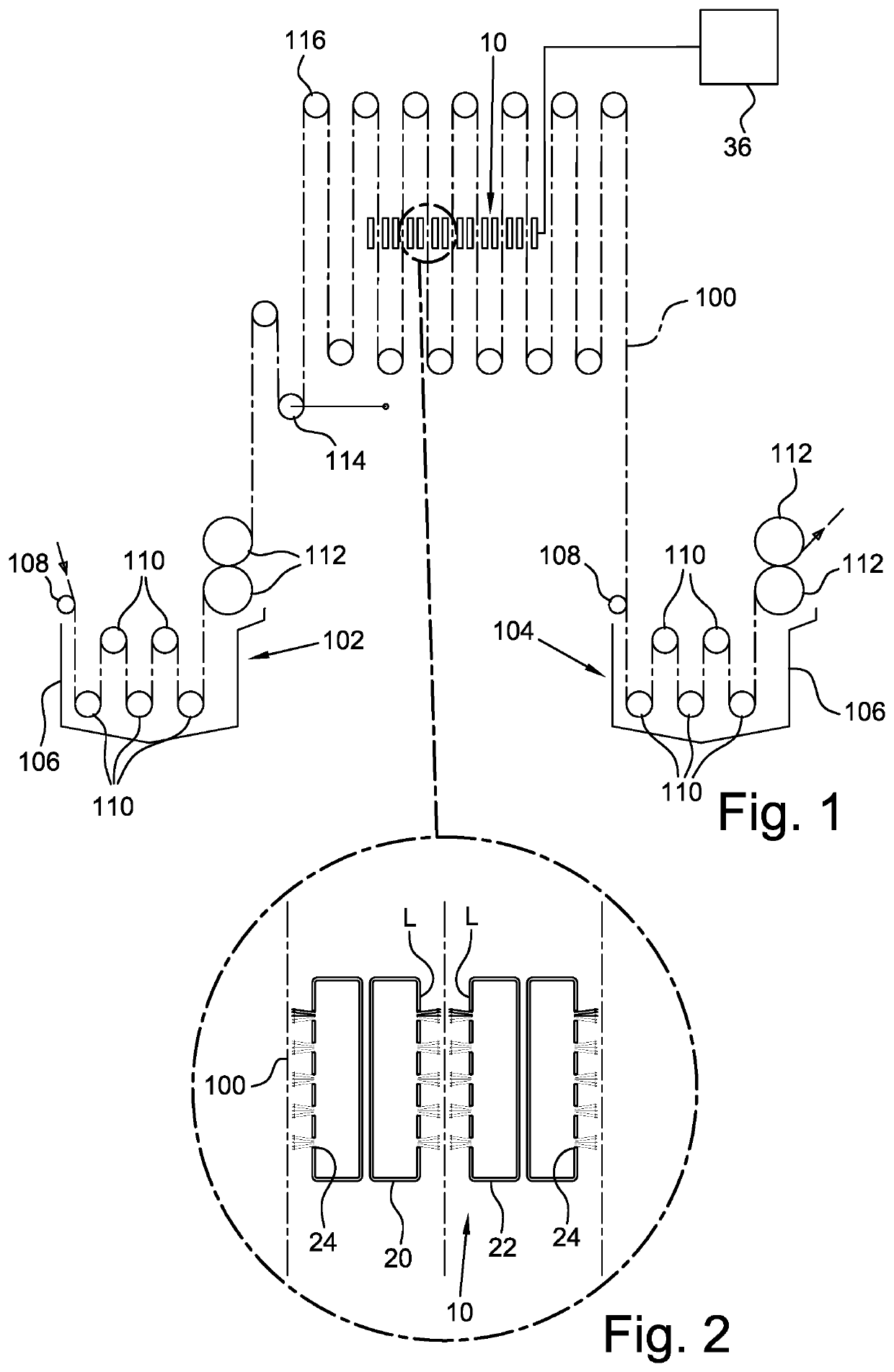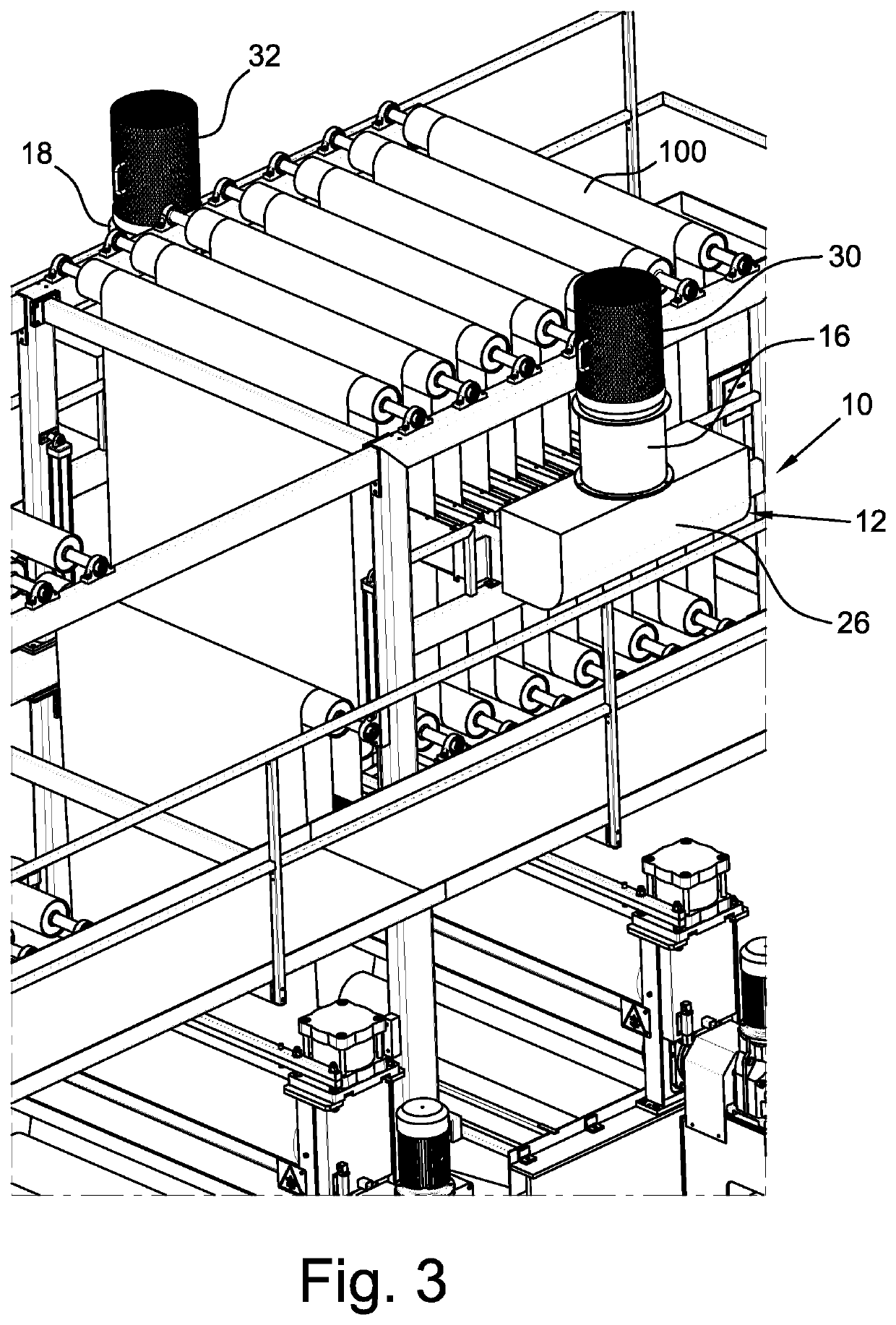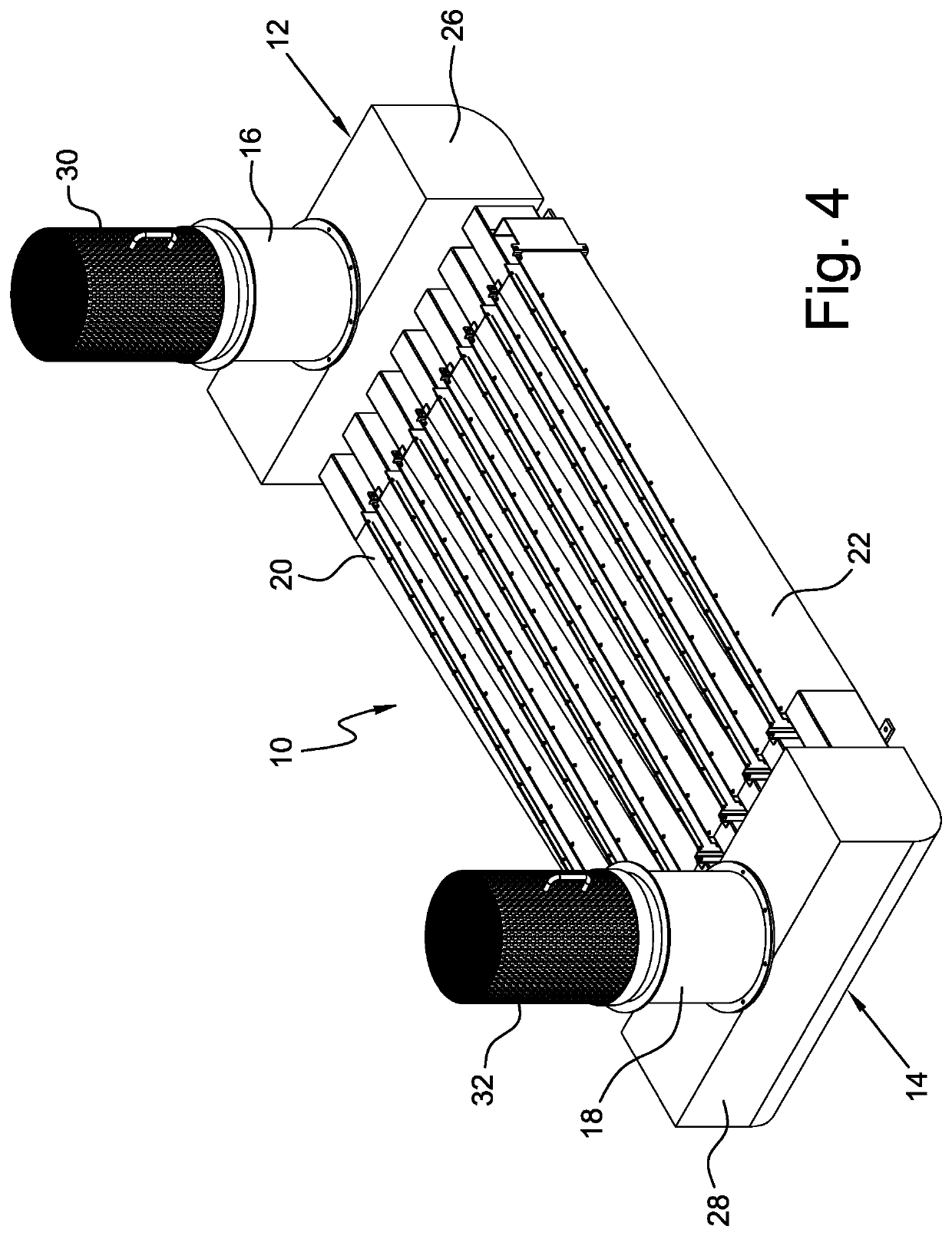Oxidation intensifier device for indigo dyeing systems
a dyeing system and intensifier technology, applied in the direction of dyeing process, liquid/gas/vapor textile treatment, indefinite length material liquid/gas/vapor treatment, etc., can solve the problem of loss of yarn corresponding to said length, difficult control of the system, high variable parameters, etc. problem, to achieve the effect of facilitating the application
- Summary
- Abstract
- Description
- Claims
- Application Information
AI Technical Summary
Benefits of technology
Problems solved by technology
Method used
Image
Examples
Embodiment Construction
[0034]With reference in particular to FIG. 1, the oxidation intensifier device according to the present disclosure, generally indicated with reference numeral 10, is installed in the space between two dyeing / squeezing assemblies 102 and 104 of a continuous dyeing system for threads, in particular a system which operates according to the open width dyeing system. Each of the dyeing / squeezing assemblies 102 and 104 comprises a respective impregnation vat 106 in which a warp thread 100, which advances in the direction of the arrows indicated in FIG. 1, is introduced in a dye bath. The dye bath may consist, for example, of an alkaline solution of indigo dye.
[0035]The warp thread 100 arrives in each vat 102 and 104 passing over a respective guide roller 108 and is then immersed in the vat itself by twisting on a plurality of return rollers 110. At the exit of each vat 102 and 104, the warp thread 100 undergoes a squeezing by passing between a pair of squeezing rollers 112.
[0036]The oxida...
PUM
| Property | Measurement | Unit |
|---|---|---|
| angle | aaaaa | aaaaa |
| length | aaaaa | aaaaa |
| length | aaaaa | aaaaa |
Abstract
Description
Claims
Application Information
 Login to View More
Login to View More - R&D
- Intellectual Property
- Life Sciences
- Materials
- Tech Scout
- Unparalleled Data Quality
- Higher Quality Content
- 60% Fewer Hallucinations
Browse by: Latest US Patents, China's latest patents, Technical Efficacy Thesaurus, Application Domain, Technology Topic, Popular Technical Reports.
© 2025 PatSnap. All rights reserved.Legal|Privacy policy|Modern Slavery Act Transparency Statement|Sitemap|About US| Contact US: help@patsnap.com



